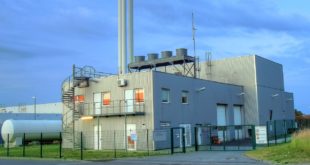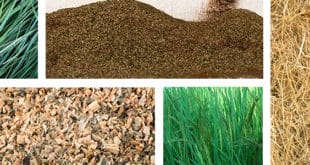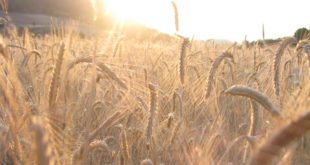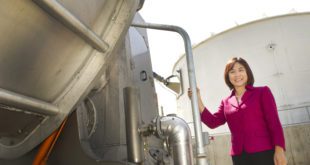The international biofuels industry has found an unlikely ally in the waste management sector.
A heightened global urgency to reduce greenhouse gas emissions (GHGs) is incentivizing renewable fuels production like never before, but the International Energy Agency (IEA) recently warned of an impending feedstock shortage for biodiesel, renewable diesel and biojet (aviation fuel) production, estimated to last through 2027 if current conditions remain unchanged. This biofuel feedstock “crunch” is a result of favorable economic and environmental policies in the U.S. and Europe.
To head off this impending shortage, meet energy consumption needs and decarbonization goals, the biofuels  industry will need to actively pursue untapped feedstock sources and improve production methods. Research and development of new technologies and conversion processes continue to expand the diversification of bio feedstocks. Vegetable oils, animal fats, algae and waste each have benefits and drawbacks as feedstocks.
industry will need to actively pursue untapped feedstock sources and improve production methods. Research and development of new technologies and conversion processes continue to expand the diversification of bio feedstocks. Vegetable oils, animal fats, algae and waste each have benefits and drawbacks as feedstocks.
At the same time, scrutiny of the waste sector is pressuring it to more sustainably manage municipal solid waste (MSW), and wastewater treatment is pushing processes that recycle and repurpose organic materials into energy resources.
These two industries are connecting in surprising ways, as they modify their processes to lessen environmental impact. Feedstocks sourced from wastes and residues are expected to produce 13 percent of biofuels in 2027.
A problem of incomparable scope According to the federal EPA’s 2018 study, 292.4 million tons of municipal solid waste (MSW) is produced in the United States each year. Americans send almost half of that trash (49.997%) to landfills annually. There are more than 3,000 active landfills in the United States alone, taking up 1,800,000 acres of habitat that displaces local flora and fauna.
Net Zero to Zero Waste
 Worse, yearly MSW production has been steadily climbing, year over year, since recording first began in the 1960s. For many Americans, the fact that they don't see egregious mounds of trash every day puts this problem “out of sight, out of mind.” Inevitably, though, this head-in-the-sand mindset will create major problems, and we're already seeing the start of that. From hazardous waste, to running out of space, to environmentally damaging byproducts, we may be overwhelmed by the rising costs—both fiscal and environmental—of landfills in this century.
Worse, yearly MSW production has been steadily climbing, year over year, since recording first began in the 1960s. For many Americans, the fact that they don't see egregious mounds of trash every day puts this problem “out of sight, out of mind.” Inevitably, though, this head-in-the-sand mindset will create major problems, and we're already seeing the start of that. From hazardous waste, to running out of space, to environmentally damaging byproducts, we may be overwhelmed by the rising costs—both fiscal and environmental—of landfills in this century.
What You Can’t See CAN Hurt You.
In a landfill, food, grass clippings, and other organic materials are densely packed beneath the surface, and must
decompose with the absence of oxygen (anaerobically). For that reason, all types of waste break down significantly more slowly in landfills than they would in nature. Landfills and wastewater treatment plants have an overabundance of fats, oils and grease (FOG) waste that is collected in large quantities by commercial kitchens. Once in a landfill, when FOG breaks down, it combines with rainwater to form a leachate that contaminates surrounding soil and often groundwater. Through this oxygen-deprived breakdown, organic materials also emit methane as a byproduct, making landfills volatile and gassy. The municipal solid waste (MSW) sector is the fourth-largest contributor to global greenhouse gas (GHG) emissions, accounting for approximately 5% of the global greenhouse budget, which includes methane. In 2021, the waste sector generated nearly three percent of the total GHG emissions of the U.S., emitting 169.2 MMT of GHGs into the atmosphere.
surrounding soil and often groundwater. Through this oxygen-deprived breakdown, organic materials also emit methane as a byproduct, making landfills volatile and gassy. The municipal solid waste (MSW) sector is the fourth-largest contributor to global greenhouse gas (GHG) emissions, accounting for approximately 5% of the global greenhouse budget, which includes methane. In 2021, the waste sector generated nearly three percent of the total GHG emissions of the U.S., emitting 169.2 MMT of GHGs into the atmosphere.
Landfills are the largest contributor of waste sector GHGs, and the third-largest source of total U.S. methane emissions, after fossil fuels and farming/land use.
There IS a solution.
Happily, there is a bright spot on the horizon with the Greasezilla? brand Brown Grease FOG separation system.
This new technology is proving to support the production of liquid biofuels, such as renewable diesel, biodiesel,
sustainable aviation fuel and marine fuels. It does so by diverting brown grease from the waste stream into the
Greasezilla FOG separation process. There, it is separated into three parts—a hefty depth of pasteurized water that can safely re-enter the treatment stream; a thin layer of “batter,” which can be siphoned off for use as an anaerobic digestion feedstock or safely landfilled; and a moderately thick layer of Brown Grease Advanced BioFuel (ABF) feedstock.
Net Zero to Zero Waste
This product is ready, as is, either to be incorporated into ABF refinery streams, or used to fuel the operation of the Greasezilla apparatus itself. The latter makes Greasezilla operation amazingly efficient and cost-effective. The former means that, for the renewable fuels industry, the Brown Grease ABF feedstock—instead of being relegated to the landfill to become a liability—is now proving a valuable resource and asset to today’s hungry biofuels market. Interested parties may download a free copy of the special report, BROWN GREASE BIO FEEDSTOCK: THE WASTIER, THE BETTER – Why brown grease advanced biofuel is now a prized resource for the biofuels industry and climate change mitigation.
 Alternative Energy HQ solar power for homes, wind energy, and bio fuel issues
Alternative Energy HQ solar power for homes, wind energy, and bio fuel issues







